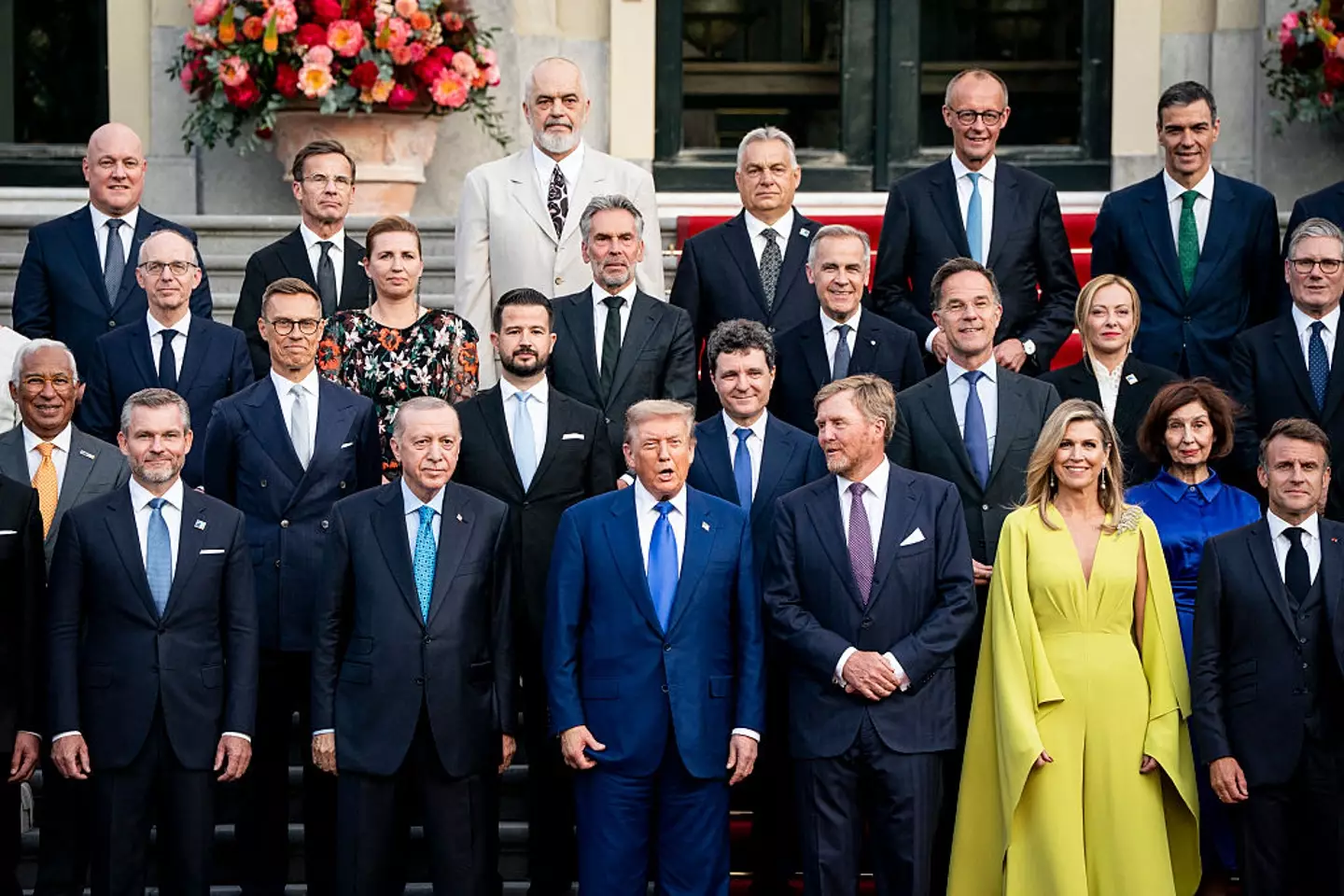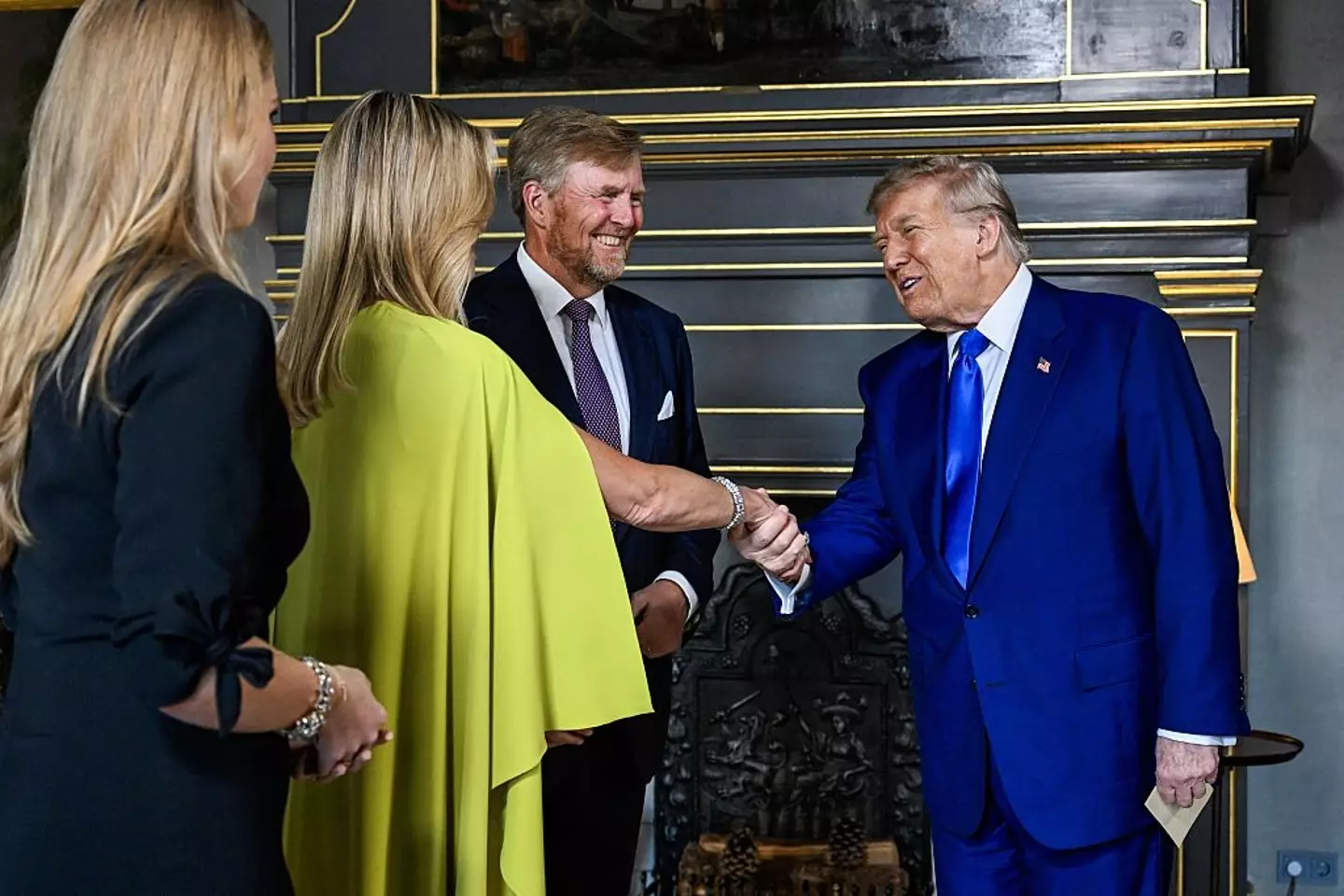A Single Incident That Led to a Thousand Theories
The plan was for it to be just another prominent meeting of world leaders. As the NATO summit took place in late June, flashbulbs popped, dignitaries posed, and polished speeches reverberated throughout The Hague’s hallways. Despite the pageantry and protocol, one image in particular—one that was more about perception than policy and had height over headlines—started an unanticipated social media fire.
President Donald Trump stood shoulder to shoulder with prime ministers, chancellors, and kings on Tuesday night beneath the chandeliers of the Dutch royal palace. An elegant, calm, and seemingly unremarkable photo from this event became the focal point of an online tidal wave. However, not due to a mispronounced word or a handshake. Rather, focus was drawn to a supposedly visual contradiction that some said suggested a much more dramatic possibility: was the man in the photo actually Donald Trump?
Rumors That Don’t Go Away
Examining the origins of such theories aids in understanding the motivation behind this moment. Rumors of conspiracy, particularly involving public officials, are not new. The Trump family has also always been the subject of such stories. For example, some online users have long accused former First Lady Melania Trump of using a body double for some public appearances. This accusation is supported by minor variations in her facial features, lighting, and even the way her sunglasses are positioned.
Therefore, theorists were quick to jump on the bandwagon when an image surfaced that purportedly showed Trump looking shorter than his peers, despite his stated height of 6 feet 3 inches. Almost immediately, the “mini-Trump” narrative took off, with memes and hashtags going viral and implying that the president might have sent a stand-in to the summit.

The Image That Started the Argument
Trump is seen posing with Turkish President Recep Tayyip Erdoğan and Dutch King Willem-Alexander in the widely shared image. In contrast to the anticipated height difference, observers observed that Trump looked about eye-level with Erdoğan and significantly shorter than the Dutch monarch. A portion of the internet was convinced that something was wrong because of this visual disparity, which was insignificant to the majority of viewers.
“That… that is not Trump,” one user wrote, while another joked that Trump ought to think about playing the lead in “The Parent Trap: Oval Office Edition.” A third shared a side-by-side comparison of earlier photos, emphasizing variations in Trump’s ear shape, posture, and proportions.
Elevation, Angles, and Deceptions
However, both skeptics and experts were quick to dismiss the apparent discrepancies. King Willem-Alexander, who is approximately 6 feet 2 inches tall, was wearing formal shoes with high heels, according to some users. The way figures appear in relation to one another in photographs can be significantly impacted by lighting, lens distortion, and camera angles. Another possible factor contributing to the illusion is the fact that Trump’s typical footwear has been known to alternate between custom-made lifts and regular dress shoes.
According to one photography expert, “it’s basic physics and perspective.” “The perception changes if you stand a little behind someone and wear different soles.”
However, this was insufficient to quell conspiracy theorists. Trump’s posture and gait were cited by some as additional indicators that something wasn’t quite right. One poster noted, “The swagger is gone.” He smirks sideways all the time. Not in this place.

The Extended Background of Political Duplicity
Even though the idea of a Trump body double may seem improbable, there are many historical instances of politicians employing stand-ins. There were rumors that Saddam Hussein had several doubles for public appearances. It was even claimed that Winston Churchill, when ill, used a voice double for wartime broadcasts.
However, with high-definition cameras and real-time worldwide media coverage, it seems unlikely at best that a full body double could pass for a world leader, particularly at an event attended by foreign intelligence and dignitaries.
Trump’s Well-Being and Public Image
Concern over Trump’s health is another factor fueling these plots. The former president’s physical and mental health at the age of 78 has been a frequent subject of conversation, particularly as he runs for reelection. Any apparent change in appearance, such as a slower gait or a new haircut, is scrutinized and exaggerated right away.
Like many theories before it, this one capitalizes on the general apprehension about not knowing the whole truth. Furthermore, the distinction between reality and illusion has become more hazy in the era of deepfakes and artificial intelligence-generated images.
The Function of Social Media in Increasing Theories
A simple image can become a worldwide headline in a matter of minutes in the era of instant virality. These online fires are fueled by platforms such as Reddit, TikTok, and X (formerly Twitter). Within hours of the photo’s release on the day of the NATO summit, the hashtag #TrumpDouble became popular.
Some users made fun of the theory by making GIFs and parody videos, while others participated in long threads that examined earlobes and jawlines. Fact-checkers, meanwhile, hurried to refute allegations by citing uncut video and different perspectives that captured the same incident.
Public Interest and Official Silence
Regarding the picture and the circulating rumors, the White House has not yet commented. And maybe that silence says a lot. They avoid giving the claims legitimacy by staying out of it. However, for some theorists, the absence of denial only serves to strengthen their arguments.
“Why don’t they just say it isn’t if it’s not true?” one user wrote. Give us evidence. “Because we’re not supposed to ask questions,” someone else said.
The Allure of Conspiracies in Psychology
Why, then, do these theories persist in the face of scant or nonexistent evidence? Psychologists note that, particularly during uncertain times, people have a natural desire to look for patterns, explanations, and control. Even if they are fanciful, conspiracies provide a story that explains the unexplainable.
Cognitive behavioral specialist Dr. Marina Hill says, “Believing that powerful figures use doubles helps people make sense of things that feel off or unpredictable.” “It’s more about feeling than facts.”
An Overview of Current Political Conversations
The discussion illustrates a larger cultural shift, where doubt has supplanted certainty and digital evidence is both a tool and a target of manipulation, regardless of whether anyone genuinely thinks that Trump used a body double.
This story isn’t really about Trump in some respects. It’s about our current world. A world in which a pixelated picture can be just as important as a policy document. a society where perception frequently prevails over reality and truth is continuously disputed.
Some parts of the internet are still focused on a still image as the NATO summit goes on and world leaders discuss issues of war and peace, looking for hints, signs, and the truth that is concealed from view.
Whether he is real or not, the man in the picture is still silent for the time being. Long after the flashbulbs go out, though, the questions still remain.